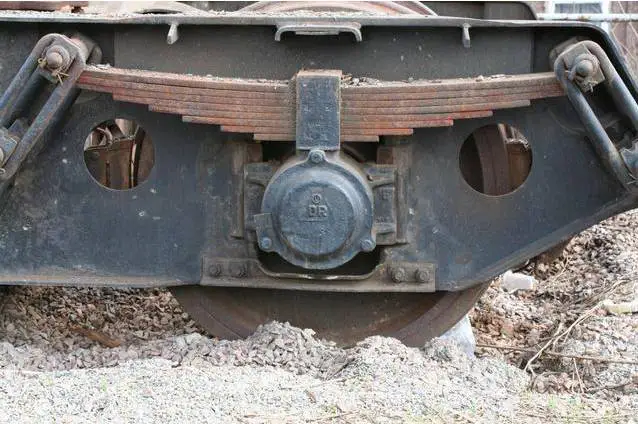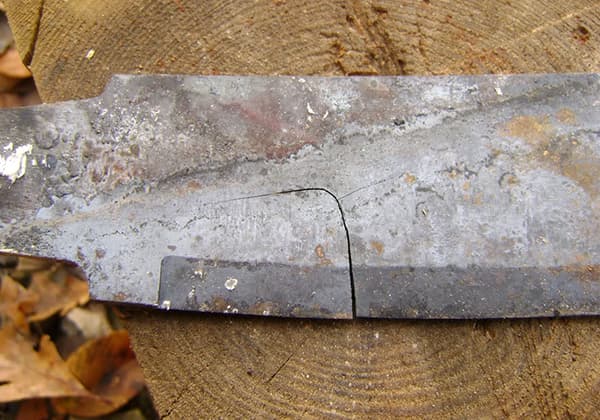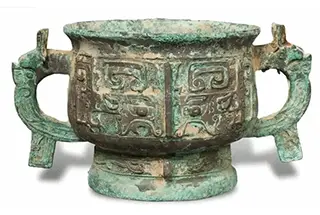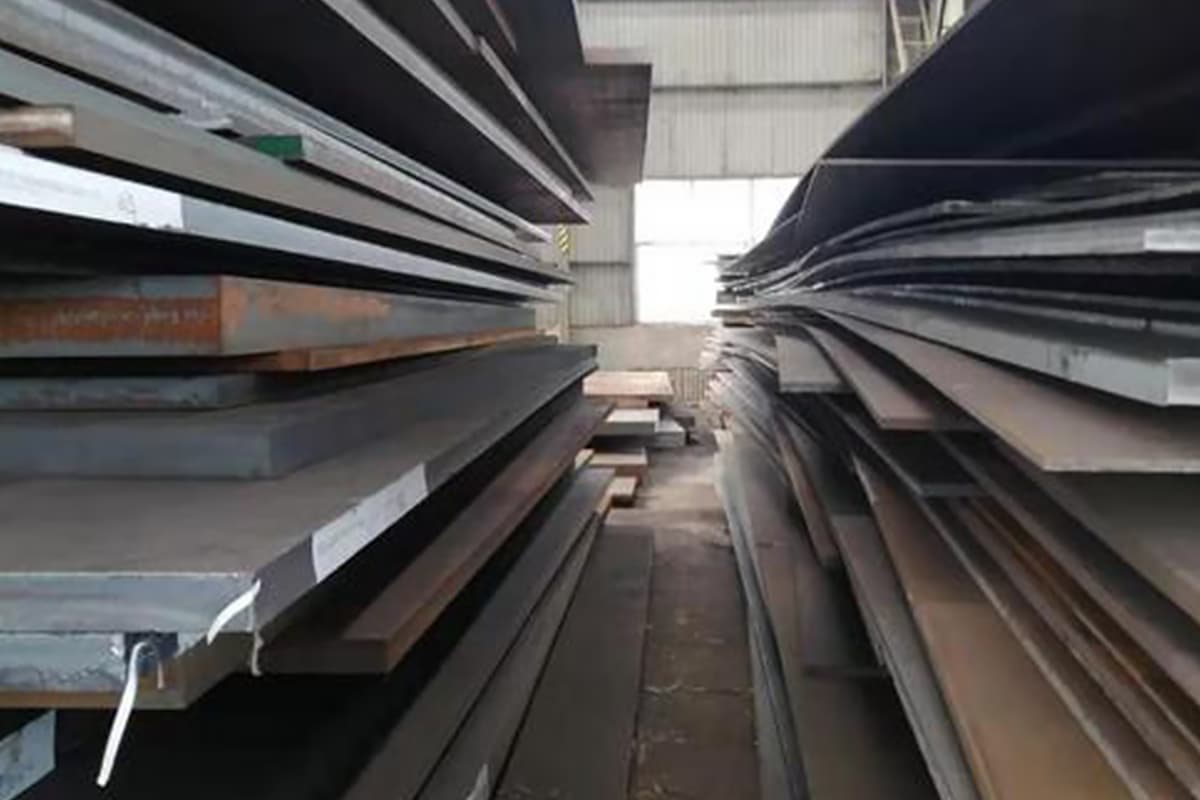1. Carbon structural steel

a. Grade Representation Method
Steel grades are represented by the Chinese pinyin “Q” which represents the yield point, followed by the numerical value of the yield point (in MPa).
The standard currently includes five grades: Q195, Q215, Q235, Q255, and Q275.
These grades differ primarily in their chemical composition, particularly carbon content, as well as their mechanical properties.
b. Main Characteristics and Applications
Carbon structural steel is divided into quality grades based on sulfur and phosphorus content.
Carbon structural steel is a type of ordinary carbon steel that does not contain alloying elements, often referred to as plain carbon steel.
Among all types of steel, carbon structural steel has the lowest price and possesses adequate strength, good plasticity, toughness, processability, and machinability. This type of steel has the highest output and is widely used for manufacturing building structures such as sheet metal, profiles (round, square, flat, hexagonal, grooved, angled, etc.), wire rods, and non-standard profiles. It is commonly used for constructing factories, bridges, and ships.
Generally, this type of steel is used directly in a hot-rolled state.
2. High-Quality Carbon Structural Steel

Steel grades are represented by Arabic numerals or a combination of Arabic numerals and chemical element symbols. The average carbon content is indicated by two digits (in ten-thousandths), e.g., “08F,” “45,” “65Mn.”
a. Standard and Grade
The national standard GB/T699-1999 specifies technical conditions such as the grade, chemical composition, mechanical properties, testing methods, and acceptance rules for high-quality carbon structural steel.
At present, there are thirty-one grades in the standard, including “08F,” “45,” “85,” “70Mn,” etc.
b. Main Characteristics and Applications
High-quality carbon structural steel grades differ mainly in their carbon content. High-quality carbon structural steel is typically divided into low-carbon steel (C ≤ 0.25%), medium-carbon steel (C 0.25-0.60%), and high-carbon steel (C > 0.60%) based on its carbon content.
Low-carbon steel is primarily used for cold working and welding structures. Surface carburizing can be performed when manufacturing wear-resistant parts.
Medium-carbon steel is mainly used for mechanical components with higher strength requirements. Depending on the required strength, it undergoes quenching and tempering treatments. High-carbon steel is mainly used for manufacturing springs and wear-resistant mechanical components.
Such steel is generally used in a heat-treated state. Sometimes, the four grades “65,” “70,” “85,” and “65Mn” are also referred to as high-quality carbon spring steel.
High-quality carbon structural steel has high output and wide application. It is mostly rolled or forged into simple shapes such as round, square, and flat bars, which are then further processed by end-users into various parts and components.
This type of steel generally needs to undergo heat treatment such as normalizing or quenching and tempering before use. It is mostly used to make general structural parts and components for mechanical products.
3. Low-Alloy High-Strength Structural Steel

a. Grade Representation Method
The nomenclature of steel grades consists of three parts in sequence: the Chinese pinyin “Q” that represents the yield point, followed by the numerical value of the yield point, and finally, the quality grade symbol (A, B, C, D, E). For example, Q390A and Q420E.
b. Standard and Nomenclature
The national standard GB/T1591-94 specifies technical requirements such as the grade, chemical composition, mechanical properties, testing methods, and acceptance rules for low-alloy high-strength structural steel.
At present, the standard includes five grades: Q295, Q345, Q390, Q420, and Q460, which differ in their chemical composition and mechanical properties.
c. Main Characteristics and Applications
Low-alloy high-strength structural steel is a low-alloy steel produced by adding a small amount of alloying elements (generally not more than 3%) to carbon structural steel. In the past, it was called ordinary low-alloy steel or low-alloy structural steel.
This type of steel has low carbon content (not exceeding 0.2%) and primarily contains vanadium, niobium, titanium, manganese, boron, etc. Compared with carbon structural steel, this type of steel has higher strength, good toughness, better processability, welding performance, and corrosion resistance.
Low-alloy high-strength structural steel products mainly include hot-rolled steel, bars, and plates. Such steel products are widely used in the manufacture of boilers, bridges, chemical, mining, ships, and other equipment.
4. Alloy Structural Steel

a. Grade Representation Method
The nomenclature of steel grades consists of Arabic numerals and chemical element symbols. The average carbon content is indicated by two digits (in ten-thousandths) at the beginning of the grade.
The representation method for alloying elements is as follows:
- When the average alloying element content is less than 1.5%, only the element is indicated in the grade name without indicating the content;
- When the average alloying element content ranges from 1.50-2.49% or 2.50-3.49%, the corresponding symbol is added after the alloying element symbol.
For example, the average contents of carbon, chromium, manganese, and silicon are 0.35%, 1.25%, 0.95%, and 1.25%, respectively, for a particular alloy structural steel, which is represented by the grade 35CrMnSi.
Similarly, carbon, chromium, and nickel with average contents of 0.12%, 0.75%, and 2.95%, respectively, are represented by the grade 12CrNi3.
b. Standard and Grade
The national standard GB/T3077-1999 specifies technical requirements such as the grade, chemical composition, mechanical properties, low magnification structure, surface quality, depth of decarburization, non-metallic inclusions, etc., for alloy structural steel.
At present, there are 77 grades under 24 steel groups (or steel types) in the standard. Steel groups are classified based on the alloying elements contained in the steel, and each group contains multiple grades. For example, the Cr steel group includes eight grades such as “15Cr” and “50Cr.”
c. Main Characteristics and Applications
Alloy structural steel is produced by adding one or more alloying elements to carbon structural steel to improve its strength, toughness, and hardenability.
Depending on the chemical composition (mainly carbon content), heat treatment process, and application, it can be classified into carburizing steel, quenched and tempered steel, and nitriding steel.
Alloy structural steel products mainly include hot-rolled bars, thick plates, thin plates, cold-drawn steel, forged flat steel, etc. Such steel is primarily used to manufacture large-sized mechanical components and widely used in various transmission parts and fasteners for automobiles, ships, heavy machinery, etc.
5. Spring Steel

a. Grade Representation Method
The nomenclature of alloy tool steel uses the letter “G” for steel, followed by numbers indicating the carbon content (in hundredths) and chemical symbols indicating the alloying elements. For example, GCr15.
b. Standard and Grade
The national standard GB/T1299-2014 specifies technical requirements such as grade, chemical composition, mechanical properties, non-metallic inclusions, surface quality, heat treatment, etc., for alloy tool steel.
The standard includes 54 grades under eight categories: high-speed tool steel, hot-work tool steel, cold-work tool steel, plastic mold steel, maraging steel, bearing steel, stainless steel, and special purpose steel.
c. Main Characteristics and Applications
Alloy tool steel is a type of steel that contains alloying elements such as chromium, molybdenum, vanadium, tungsten, or cobalt to improve its hardness, wear resistance, toughness, and heat resistance.
It is widely used in the manufacture of cutting tools, dies, molds, and other components that require high hardness and wear resistance.
Different types of alloy tool steel have their own specific characteristics and applications.
- High-speed tool steel is suitable for cutting tools that operate at high speeds, while hot-work tool steel is used for high-temperature applications such as forging and extrusion dies.
- Cold-work tool steel is suitable for cold stamping and forming applications, and plastic mold steel is used in the manufacture of plastic injection molds.
- Bearing steel is used in the production of bearings, while maraging steel is used for aerospace and defense applications due to its high strength and toughness.
- Stainless steel is used in various industries due to its corrosion resistance, and special purpose steel is used in specialized applications such as welding and nuclear power plants.
6. Carbon Tool Steel
a. Grade Representation Method
The grades of carbon tool steels are represented by the pinyin letter “T” for the Chinese character “carbon”, Arabic numerals, and chemical symbols. The Arabic numerals indicate the average carbon content (in thousandths).
b. Standard and Grades
The national standard GB1298-86 specifies the technical conditions for the grades, chemical composition, hardness, fracture, low magnification structure, decarburization depth, hardenability, and surface quality of carbon tool steel. The standard includes eight grades: T7, T8, T8Mn, T9, T10, T11, T12, and T13.
c. Main Characteristics and Applications
Carbon tool steel is a type of high-carbon steel. Its minimum carbon content is 0.65%, and it can reach up to 1.35%. In order to improve the overall performance of the steel, 0.40-0.60% manganese is added to the “T8” steel to obtain “T8Mn” steel.
When the working temperature of the cutting tools made of carbon tool steel exceeds 250oC, the hardness and wear resistance of the tools (i.e., the red hardness of the steel) sharply decrease, and its performance deteriorates.
7. Alloy Tool Steel

a. Grade Representation Method
The grade representation method of alloy tool steel uses alloy element symbols and Arabic numerals. The representation method of alloy element symbols is the same as that of alloy structural steel.
- When the average carbon content is less than 1.00%, the carbon content (in thousandths) is represented by one Arabic numeral at the beginning of the grade.
- When the average carbon content is greater than 1.00%, the average carbon content is generally not indicated.
For example, the grade of alloy tool steel with an average carbon content of 0.88% and a chromium content of 1.50% is represented by “9Cr2”; the grade of alloy tool steel with an average carbon content of 1.58%, a chromium content of 11.75%, an average molybdenum content of 0.50%, and an average vanadium content of 0.23% is represented by “Cr12MoV.
b. Standard and Grades
The national standard GB1299-2000 specifies the technical requirements for alloy tool steel. The standard divides alloys into six groups based on their usage: steel for measuring tools and cutting tools, steel for impact-resistant tools, steel for hot working dies, steel for cold working dies, steel for non-magnetic dies, and steel for plastic molds, including a total of 35 grades.
c. Main Characteristics and Applications
Alloy tool steel not only has a high carbon content, but also a high content of alloy elements such as chromium, tungsten, molybdenum, and vanadium.
Therefore, alloy tool steel has higher hardness, wear resistance, and toughness than carbon tool steel, especially quenching and tempering ability and red hardness that cannot be achieved by carbon tool steel.
Alloy tool steel is classified into steel for pressure processing (hot and cold pressure processing) and steel for cutting processing according to the processing method.
The main varieties of steel are hot-rolled and forged round steel, square steel, flat steel, as well as cold-drawn and bright bar steel. This type of steel is mainly used for manufacturing all kinds of molds for cold and hot deformation, as well as various measuring tools and cutting tools.
8. High-Speed Tool Steel
a. Grade Representation Method
The grade representation method of high-speed tool steel is the same as that of alloy structural steel.
The national standard GB/T9943-88 includes 14 grades of high-speed tool steel, and GB/T9942-1988 and GB/T9941-1988 include two and three grades, respectively, all of which are included in the 14 grades mentioned above.
According to the content of alloy elements and performance characteristics, high-speed tool steel can be divided into tungsten high-speed steel, molybdenum high-speed steel, and super-hard high-speed steel.
b. Main Characteristics and Applications
High-speed tool steel is commonly known as “Feng steel”. The steel has a high carbon content, and the carbon content of most grades is not less than 0.95%. The steel also has high contents of alloy elements such as tungsten, molybdenum, chromium, vanadium, and cobalt.
The main varieties of high-speed tool steel products include hot-rolled, forged, peeled, cold-drawn, and bright steel bars; large cross-section forged round steel and hot-rolled and cold-rolled steel plates.
High-speed tool steel is used to make cutting tools (such as turning tools, milling cutters, broaches, reamers, twist drills, etc.), as well as molds, rollers, and wear-resistant mechanical parts.
9. Bearing Steel

a. Grade Representation Method
Bearing steel is divided into four categories based on chemical composition and usage characteristics: high-carbon chromium bearing steel, carburized bearing steel, high-carbon chromium stainless bearing steel, and high-temperature bearing steel.
The grade representation method of high-carbon chromium bearing steel is to add the symbol “G” at the beginning of the grade, but the carbon content is not indicated. The chromium content is represented in thousandths, and the representation method of other alloy elements is the same as that of alloy structural steel. For example, the grade of bearing steel with an average chromium content of 1.5% is “GCr15”.
b. Standard and Grades
Currently, China’s bearing steel standards include GB/T18254-2000 “Technical Conditions for High-Carbon Chromium Bearing Steel”, GB/T3203-1982 “Technical Conditions for Carburized Bearing Steel”, GB/T3086-1982 “Technical Conditions for High-Carbon Chromium Stainless Bearing Steel”, YB/T688, and GB/T1205 “Technical Conditions for High-Temperature Bearing Steel”.
These standards include 15 grades of bearing steel, including five grades of high-carbon chromium bearing steel such as “GCr15”; six grades of carburized bearing steel such as “G20CrMo”; two grades of high-carbon chromium stainless bearing steel such as “9Cr18” and “9Cr18Mo”; and two grades of high-temperature bearing steel such as “Cr4Mo4V” and “Cr14Mo4”.
c. Main Characteristics and Applications
Bearing steel has high hardness, tensile strength, contact fatigue strength, and wear resistance, as well as considerable toughness, meeting the requirements for corrosion resistance and high-temperature performance under certain conditions.
The main varieties of bearing steel products are hot-rolled and forged round steel, cold-drawn round steel, and wire.
10. Stainless Acid-Resistant Steel

a. Grade Representation Method
Stainless steel is the abbreviation of stainless acid-resistant steel.
b. Standard and Grades
Currently, China’s standards for stainless steel include 33 standards such as GB/T1220-1992 “Stainless Steel Rods”, GB/T4237-1992 “Stainless Steel Hot Rolled Plates”, GB/T3280-1992 “Stainless Steel Cold Rolled Plates“, GB/T13296-1991 “Seamless Stainless Steel Tubes for Boilers and Heat Exchangers”, and GB/T4356-1984 “Stainless Steel Flat Bars.
Generally speaking, steel that is resistant to corrosion in weak media such as air, steam, and water is called stainless steel, while steel that is resistant to corrosion in strong media such as acids, alkalis, and salts is called acid-resistant steel or corrosion-resistant steel.
There are many types of stainless steel, which are classified according to the metallographic structure of the steel according to China’s national standard GB/T13304-1999 “Steel Classification” and internationally recognized classification methods.
c. Main Characteristics and Applications
The main varieties of stainless steel products are hot-rolled plates and strips, cold-rolled plates and strips, hot-rolled and forged bars and profiles, hot-rolled flat bars, seamless pipes, and welded pipes.
Stainless steel has a wide range of applications, mainly used in the manufacturing of petrochemical equipment and pipelines, nuclear energy industry equipment, ship equipment, medical devices, tableware, and other devices that require stainless and corrosion-resistant properties.
11. Heat-Resistant Steel
a. Grade Representation Method
The grade representation method of heat-resistant steel is the same as that of stainless steel.
b. Standard and Grades
In the current national standards, there are three standards for the execution of heat-resistant steel: GB/T1221-1992 “Heat-Resistant Steel Rods”, GB/T4238-1992 “Heat-Resistant Steel Plates” and GB/T8732-1988 “Steel for Steam Turbine Blades”.
The standards make detailed provisions on the technical requirements such as the grade, chemical composition, smelting method, delivery status, mechanical properties, low-power structure, resistance to top forging tests, and steel surface quality of heat-resistant steel, as well as special technical requirements of the demand side.
In the standard, heat-resistant steel is divided into four types according to the metallographic structure: austenite type, ferrite type, martensite type, and precipitation hardening type, with a total of 46 grades.
c. Main Characteristics and Applications
Heat-resistant steel has good chemical stability at high temperatures, can resist oxidation and corrosion by other media, and has high strength. The main varieties of heat-resistant steel products are hot-rolled and forged profiles (round, square, etc.) and flat steel, hot-rolled and cold-rolled plates and strips, seamless steel pipes, etc.
12. Silicon Steel for Electrical Use

a. Execution Standard and Grades
China’s current standards for silicon steel for electrical use include GB/T5218-88 “Hot-Rolled Silicon Steel Sheets for Electrical Purposes”, GB/T2521-1996 “Cold-Rolled Grain-Oriented and Non-Oriented Magnetic Steel Sheets and Strips,” and YB/T5224-93 “Grain-Oriented Silicon Steel Thin Strip,” with a total of 72 grades.
b. Main Characteristics and Applications
Silicon steel is a low-carbon iron-silicon soft magnetic alloy material. Carbon is a harmful element in silicon steel, and the carbon content in the steel is generally not more than 0.015%. Silicon is the most effective element in increasing the resistance of iron. Adding silicon to electrical steel can reduce eddy current losses and lower the material’s iron loss.
The iron crystal grain arrangement direction of cold-rolled non-oriented silicon steel strip is random and disordered, and the strip has isotropy. It is mainly used to make the core of rotating machines. Low-silicon silicon steel strips are used to make small electric motors for household appliances, and high-silicon silicon steel strips are used to make generators and large electric motors.
The iron grains of cold-rolled grain-oriented silicon steel strip are oriented and arranged along the rolling direction. Compared with cold-rolled non-oriented silicon steel strip, its magnetic properties along the rolling direction are particularly excellent. It is mainly used to make transformer cores for power generation, transmission, and distribution.
Grain-oriented silicon steel thin strips (with a thickness not exceeding 0.20mm) are mainly used to make transformer cores for various power sources such as pulse transformers, magnetic amplifiers, and converters operating at frequencies above 400Hz.


